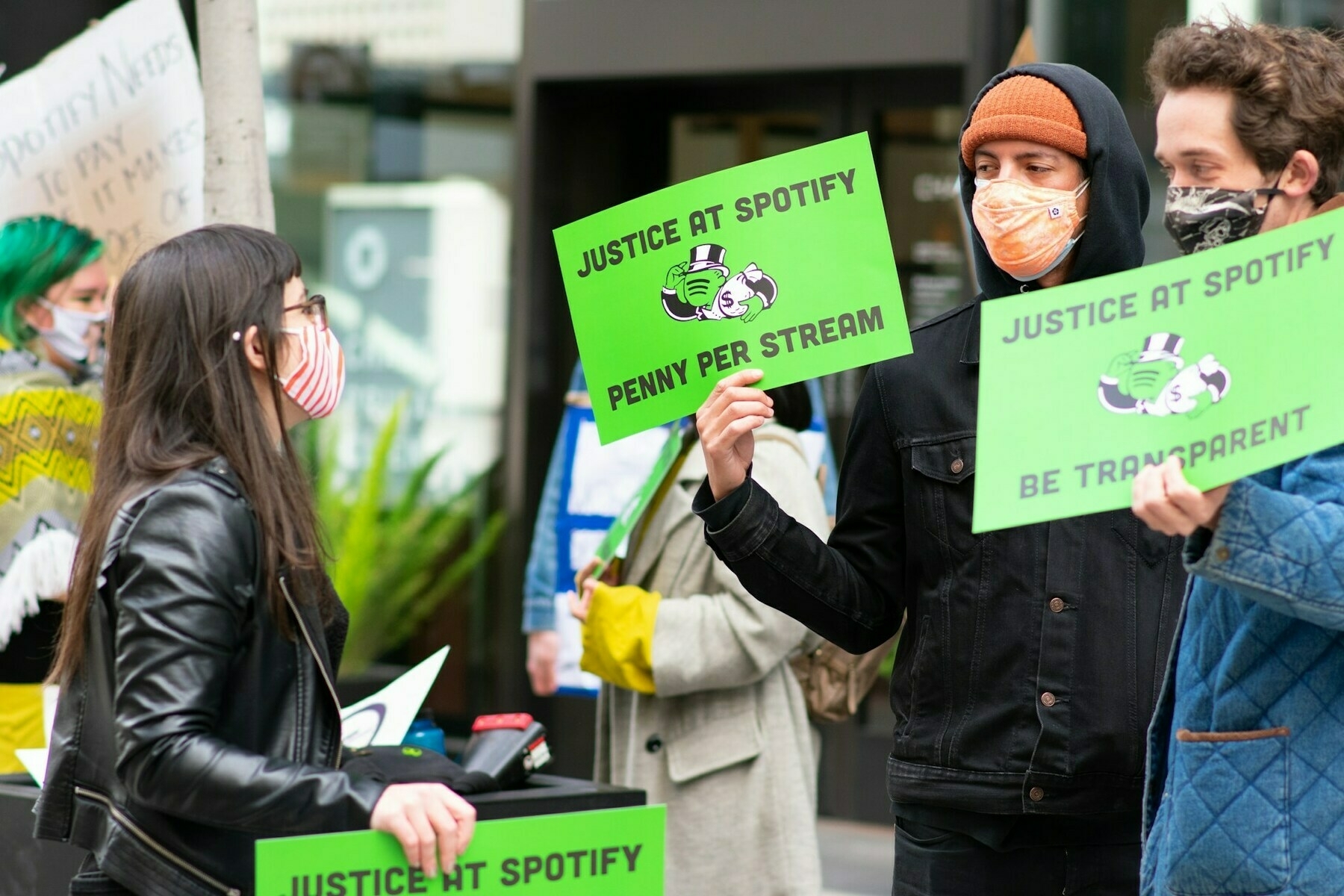I'm increasingly uneasy about being a Spotify Premium subscriber

In 2009, seeing which way the wind was blowing, I decided to sell my CD collection and use the proceeds to fund streaming my music via Spotify. Fifteen years later, factoring in price rises and an upgrade to the family version, I’ve probably spent about £2,000. So I reckon I’m about even.
I’ve really enjoyed using Spotify. I like the way it’s available everywhere, including on my Google Home devices and in my car. It’s learned my tastes and I’ve discovered all kinds of music through the service.
However, I’ve felt increasingly guilty about the way that Spotify, and other music streaming services, treat artists. We’re now in a situation where artists have to tour to make a living. I’m not sure that’s necessarily healthy.
Also, given Sabrina Carpenter seems to show up on every playlist I ask Spotify to create at the moment (including ‘hardcore gym rap’!) I’m pretty sure they are also making a lot of money from paid placements. My unease is only compounded with the revelations in this article which details the ways that Spotify have actively tried to reduce the amount of royalties paid to artists.
Perhaps it’s time to move on. Perhaps the answer is to go back to MP3s and use a platform such as Bandcamp? 🤔
According to a source close to the company, Spotify’s own internal research showed that many users were not coming to the platform to listen to specific artists or albums; they just needed something to serve as a soundtrack for their days, like a study playlist or maybe a dinner soundtrack. In the lean-back listening environment that streaming had helped champion, listeners often weren’t even aware of what song or artist they were hearing. As a result, the thinking seemed to be: Why pay full-price royalties if users were only half listening? It was likely from this reasoning that the Perfect Fit Content program was created.
After at least a year of piloting, PFC was presented to Spotify editors in 2017 as one of the company’s new bets to achieve profitability. According to a former employee, just a few months later, a new column appeared on the dashboard editors used to monitor internal playlists. The dashboard was where editors could view various stats: plays, likes, skip rates, saves. And now, right at the top of the page, editors could see how successfully each playlist embraced “music commissioned to fit a certain playlist/mood with improved margins,” as PFC was described internally.
[…]
Some employees felt that those responsible for pushing the PFC strategy did not understand the musical traditions that were being affected by it. These higher-ups were well versed in the business of major-label hitmaking, but not necessarily in the cultures or histories of genres like jazz, classical, ambient, and lo-fi hip-hop—music that tended to do well on playlists for relaxing, sleeping, or focusing. One of my sources told me that the attitude was “if the metrics went up, then let’s just keep replacing more and more, because if the user doesn’t notice, then it’s fine.”
[…]
In a Slack channel dedicated to discussing the ethics of streaming, Spotify’s own employees debated the fairness of the PFC program. “I wonder how much these plays ‘steal’ from actual ’normal’ artists,” one employee asked. And yet as far as the public was concerned, the company had gone to great lengths to keep the initiative under wraps. Perhaps Spotify understood the stakes—that when it removed real classical, jazz, and ambient artists from popular playlists and replaced them with low-budget stock muzak, it was steamrolling real music cultures, actual traditions within which artists were trying to make a living. Or perhaps the company was aware that this project to cheapen music contradicted so many of the ideals upon which its brand had been built. Spotify had long marketed itself as the ultimate platform for discovery—and who was going to get excited about “discovering” a bunch of stock music? Artists had been sold the idea that streaming was the ultimate meritocracy—that the best would rise to the top because users voted by listening. But the PFC program undermined all this. PFC was not the only way in which Spotify deliberately and covertly manipulated programming to favor content that improved its margins, but it was the most immediately galling. Nor was the problem simply a matter of “authenticity” in music. It was a matter of survival for actual artists, of musicians having the ability to earn a living on one of the largest platforms for music. PFC was irrefutable proof that Spotify rigged its system against musicians who knew their worth.
Source: Harper’s Magazine